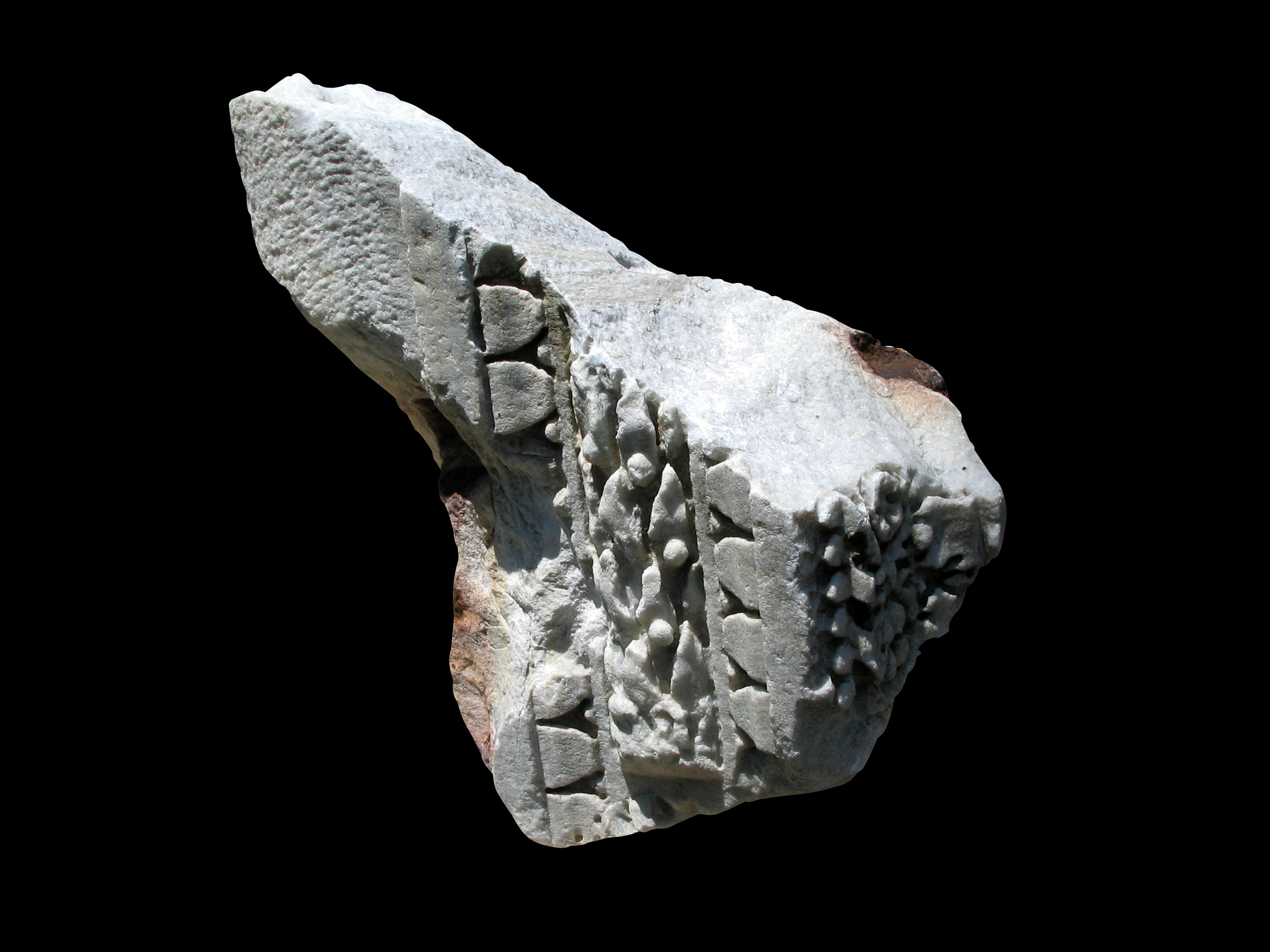Fragment of an architrave
Fragment of a small-scale architrave preserving a very limited portion of the vertical surface and a larger one of the soffit, with the corner section of a lacunar. On the front side, the architrave shows a thick plain fillet followed by a cyma reversa moulding on which there are carved a series of small leaves with indented margins, alternated to tiny drop-shaped tongues; below this runs a fascia decorated with rounded, four-petaled flowers encased within a frail vegetal scrolls held together by thin bands; then follow a thick astragal carved with a twisted rope motif wrought with undercarving and fretwork, a kymation of tiny triangular leaves and lastly another vegetal motif now highly deteriorated and thus not recognizable. The soffit is made of a narrow lacunar deeply carved with a garland of laurel leaves and rounded acorns that originates from a vegetal calyx; the leaves have elongated shape and undulating margins. On the three surviving sides the lacunar is surrounded by a cyma in which tiny tongue-shaped leaves and small semicircular elements are cut. From a stylistic point of view our piece is characterized by deep carving with much chiaroscuro, obtained with a large use of the drill which is employed both as a means to enhance plasticism, as in the case of the garland on the lacunar, and to achieve a virtuoso effect, as in the case of the twisted rope wrought with fretwork. Regarding composition, the artefact is instead marked by the proliferation of ornaments which occupy the whole surface, with a pronounced tendency to obliterate both the structural meaning of each moulded element and the volumetric division proper of the architrave. The ornaments’ multiplication and the kind of carving with large use of the drill are all tracts typical of the revival of Flavian models that took place in the course of the Severan age. The treatment of the vegetal decoration, especially of the tiny leaves with indented margins, visible on our piece finds very close comparisons with the decorations carved on the entablatures of the Arch of Septimius Severus in the Roman Forum, of the Arch of the Argentarii and of the Baths of Caracalla. An architrave again of Severan age from the theatre at Teanum supply us with a useful parallel for the motif of the wholly indented fasciae, although on this exemplar the articulation of the fasciae is still completely perceivable and the search for a purely ornamental effect is not as pronounced as on our piece. The tendency to obliterate the structural meaning will in fact become more and more marked in the course of the III century, when also the motif of the twisted rope will develop after being initially introduced in Rome on the entablatures of the Baths of Diocletian. Our architrave is therefore datable to the III century AD and, most probably, to second half of it.







